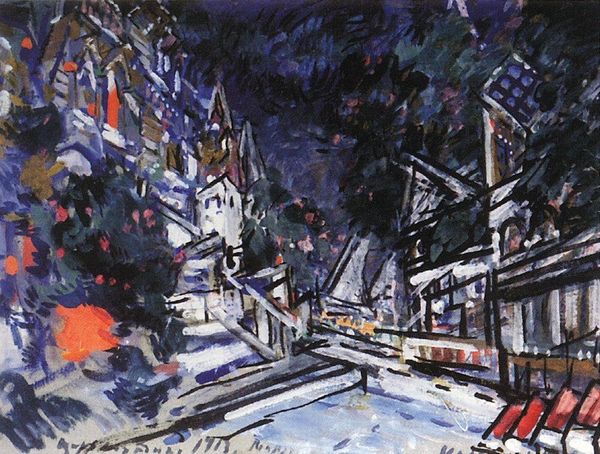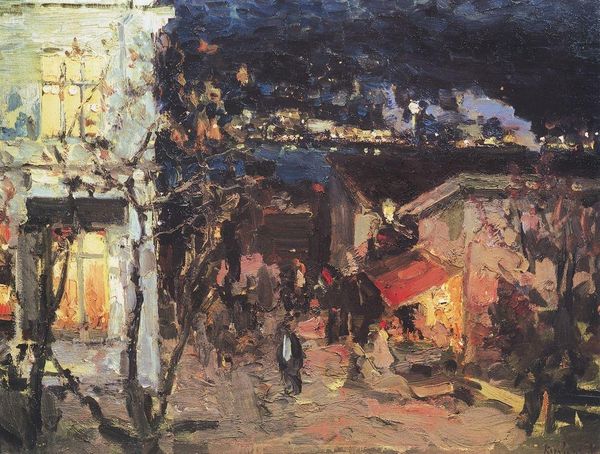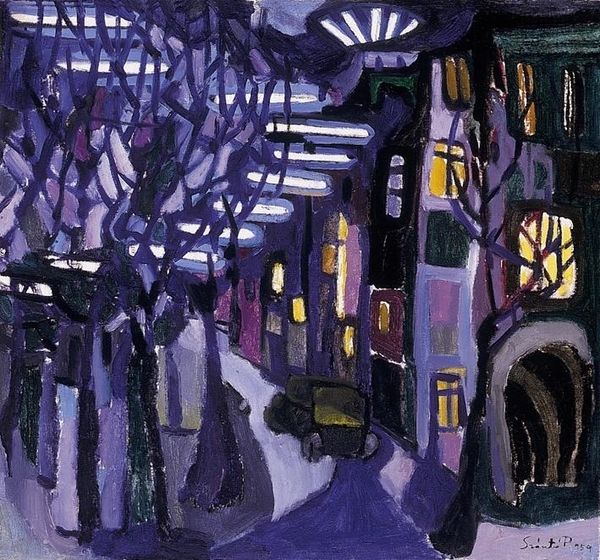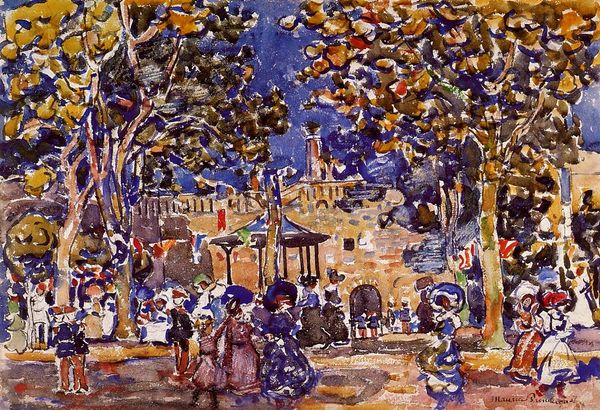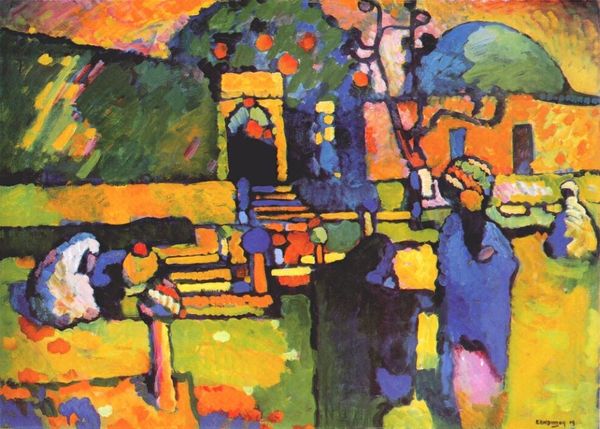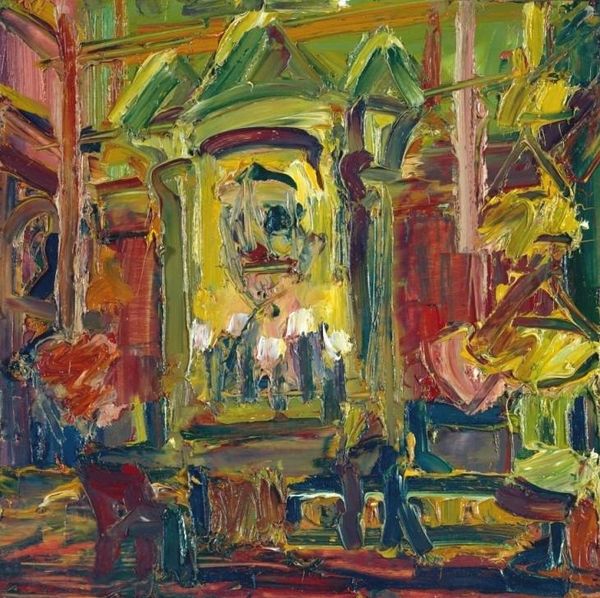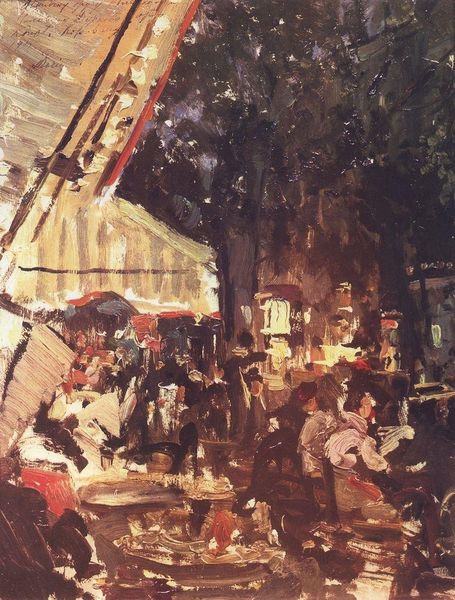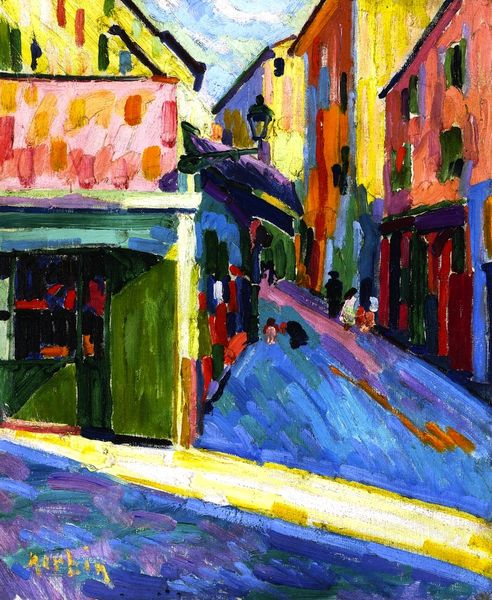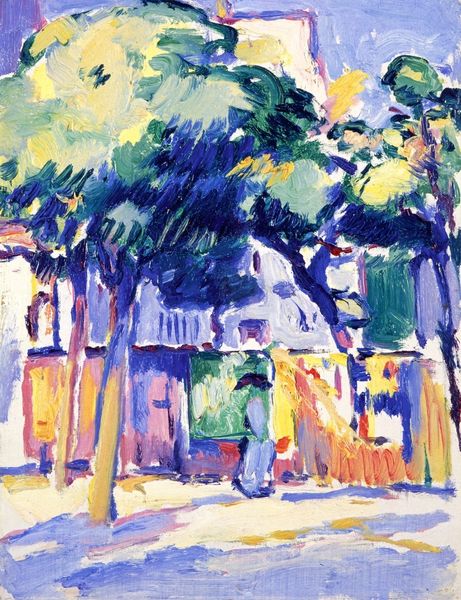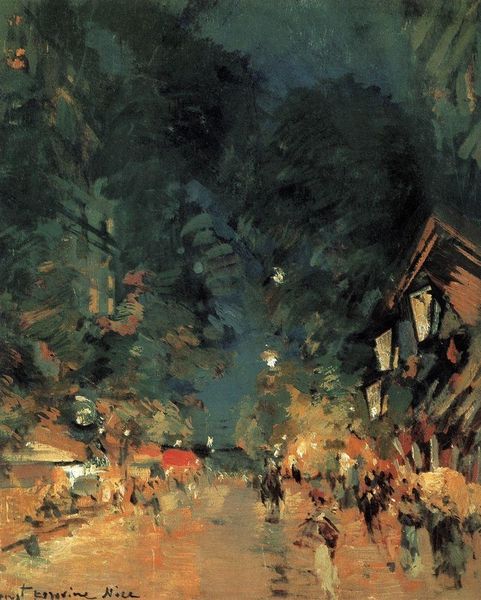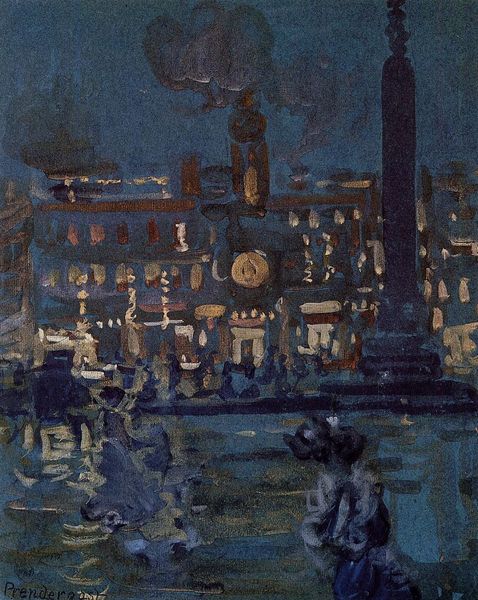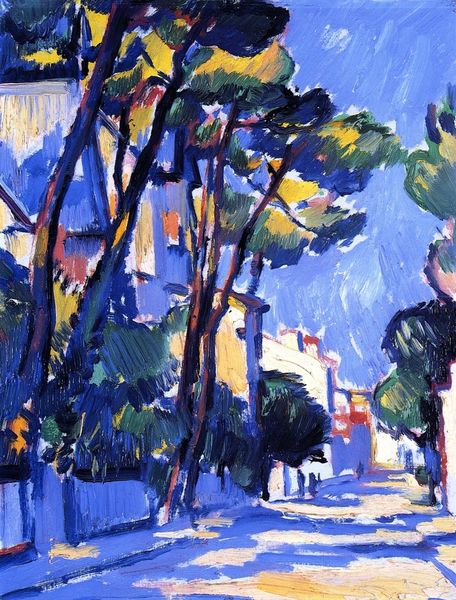
Copyright: Public domain
Curator: Konstantin Korovin’s “Masquerade,” painted in 1913, offers a glimpse into a world of nighttime revelry, all rendered with loose brushstrokes and a vibrant palette. Editor: My first impression is the sheer sense of atmosphere. It’s overwhelmingly nocturne, almost as if the scene itself is veiled in secrecy, isn’t it? The purple and blues suggest a palpable energy, something a little unreal. Curator: Precisely. Korovin masterfully uses the impasto technique to capture light – notice the dabs of contrasting colors throughout. The application directs the eye through compositional elements that serve to dissolve the boundaries between space, structure, and shadow. The structural organization into overlapping flat planes brings the representational aspects into stark conflict with non-representational ones. Editor: And that focus on the effects of light transforms familiar cityscape symbols – figures, buildings – into flickering forms. I'm particularly drawn to the suggestion of masks. The darkness itself is like a mask, concealing as much as it reveals. There’s an unsettling feeling there. This liminality. Like the masquerade ball it calls to mind. Curator: Indeed, the painting resists being defined by a single subject. What are typically viewed as objective shapes or images are not actually objective in any pure sense, for example a light pole here isn't actually a light pole there but instead exists to create depth and separation within the overall picture plane. Editor: In masquerades, identities are blurred, societal rules are suspended and that can evoke an uneasy response from a viewer of the time and still today. So this artwork feels imbued with that kind of social tension beneath its superficially glittering surface. Curator: An astute point. He challenges the notion of art as mere representation and calls into question the role that any picture is supposed to perform within a larger cultural ecosystem of meaning. Editor: It seems fitting that this scene remains perpetually nocturnal. Perhaps it's because the anxieties of its era cannot bear the light of day, making a permanent and visually palpable record of what that kind of psychic pressure looks like. Curator: A wonderfully evocative point of view from the symbolic side, reminding us that its materiality and formal characteristics don’t simply stand on their own. Thank you for sharing your expertise. Editor: The pleasure was all mine, this gave us the opportunity to look deeper and engage meaningfully. I look forward to further explorations and conversations like this with you.
Comments
No comments
Be the first to comment and join the conversation on the ultimate creative platform.
